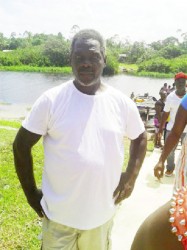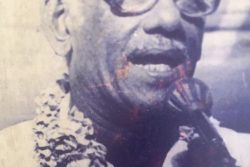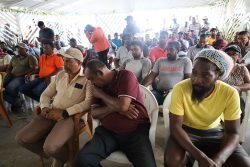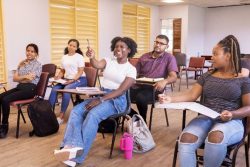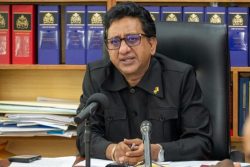Story and photos by David Pappanah
Baracara is a predominately African community that is located approximately fifty miles up the Canje River. The village is accessed by speedboat, which takes about three hours from the coast.
The settlement sits on both the east and west banks of the river. While most residents reside on the east bank, certain public facilities such as the health centre, the school and the newly constructed resource centre are located on the western bank. The two recreational grounds, two liquor stores, six shops and the Scottish Presbyterian, Adventist and Pentecostal churches, however, are found on the eastern side of the river.
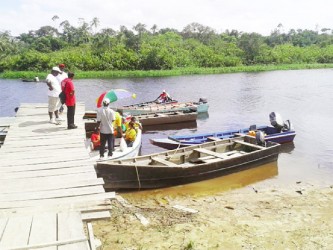
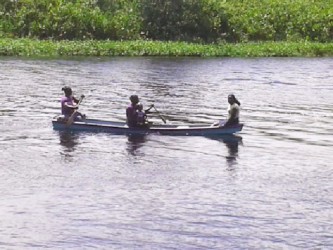
Moving around the community is mostly done by canoe, and it is one of the first skills children learn. Sunday Stabroek was told that children would paddle to school on many days, although some of them would have adult supervision.
Vernette Park a resident who has been living in Baracara for over 55 years said that the main economic activity for residents was small-scale farming including cattle-rearing and logging. However, there were a few residents, he said, who engaged in fishing, bird-catching and hunting. Park expressed the view that small-scale farming needed to be boosted, and that farmers did not have the finances which were needed for large-scale agriculture.
He referred to the fact that reaped produce would spoil at times and the farmers would suffer. The problem was, he explained, the distance from the coast, so that boats did not operate daily on the river to move produce to market. If a farmer had produce to take to the market he had to hire a boat which was expensive. In addition, when they arrived at the market in New Amsterdam, he said, they were not accommodated very well.
“Sometimes we don’t have space to vend or sometimes the market is flood,” he said, and then farmers would have to sell produce below production cost just to get it off their hands. In years gone by, Park said, large vessels would pass through the community and stop and purchase produce as well as assist farmers to transport it to the coast. This used to be a great help to the community, he said, but because of heavy drug trafficking activity in the area the vessels stopped.
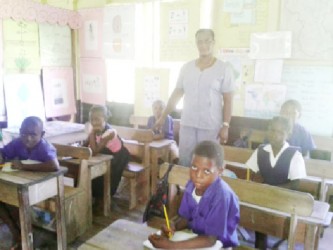
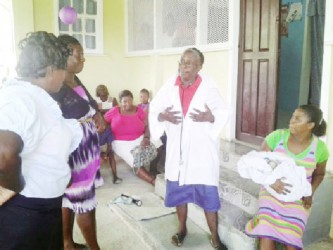
Park also called on the Ministry of Agriculture to conduct soil tests since they are not reaping the amount and quality of produce that is expected, and he also wanted more eye clinics to be conducted in the community. He told Sunday Stabroek that during the days of firesides many people would use various kinds of wood to cook, and that the smoke from some of these was harmful and affected the eyes, so this is now a problem. He also called on the government to pay more attention to the community.
The world beyond Georgetown also spoke with Cheryl Amsterdam who had just stepped out of her canoe. As she held on to her paddle she said, “We, the ladies of Baracara, work very hard” in response to a question about the lifestyle in the community. She said that they do not have a market and everybody had to tend their farms. Asked about the daily routines Amsterdam replied that their days start at 5.30 with morning devotions, and then the women would begin preparations for meals as well as taking care of other chores.
Once the chores were over, they would paddle to their farms where they spent the majority of the day.
They would return home around 4pm when the sun has cooled down. She told this newspaper that when she looks back at her days growing up it can be seen that the community has developed, although there is still space for a lot more development
The 64-year-old said that Baracara needed electricity and treated water for domestic use.
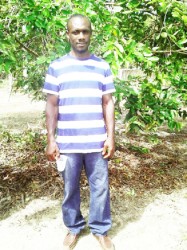
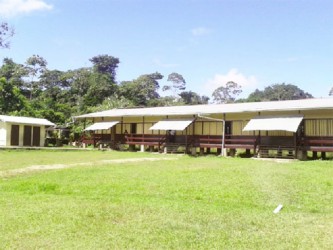
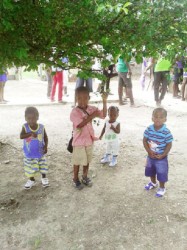
Over at the school, Sunday Stabroek spoke with Kim Sampson, the head teacher. She said the school has 95 students with classrooms catering for nursery through to secondary level. The head noted that they have been trying to get a history of the school but many of the senior citizens have passed away and it is difficult to find out any information. She commented that the school has been running smoothly as supplies of stationery and other items are delivered up to date.
According to Wilton Hinds, a community oriented resident, the residents welcome change. Twenty years ago, it was said, Baracara was still in the traditional days, but with the modern generation the community has been transformed. He noted that the young people are the ones who are more open to change and are eager to be involved in social activities. The community boasts a music group and peer groups. However, Hinds said that the community lacks jobs and recreational facilities and it would be appreciated if the government created facilities to assist the youths who have finished school.
He said that the community tries its best to keep up with what is happening in Guyana by watching the televised news and following the newspapers. However, like other residents he said that electricity is a major problem, although some villagers have solar panels or generators.
When asked how holidays are celebrated he responded that Christmas, New Year and Easter are spent by going to church, cooking and sharing with each other. The entire community would gather at the community ground, he said, and have a good time. He also noted that the community is a big fan of the festival of colours and they view it as a national holiday and not a religious one; they celebrate Phagwah to promote culture and respect people.
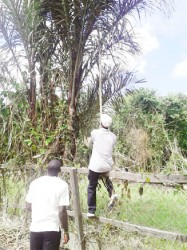
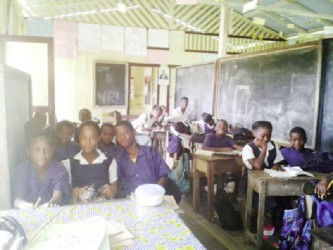
Hinds also boasted of the friendly people who live in Baracara. “If someone passes through here a night and they need a place to stay, we welcome them. We do not chase people away” he said.
Recalling what life was like in days gone by, he said there were mostly “waffle houses” in the settlement. These were the houses his generation and previous generations grew up in. They were built of wood while the roof was made of kokerite palm leaves, and they were very breezy.
Names such as Hinds, Amsterdam, Joseph, Caesar and Park are associated with the community, although many residents have migrated to different parts of the country as well as abroad over the years.
Many of the residents rely on ‘bush doctors’ for medical assistance, and a few still believe that ‘bush medicine’ works better than the Western medicine which is prescribed by coastal doctors.
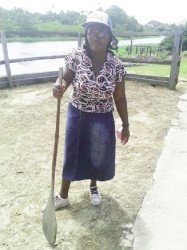
Vernette Park
